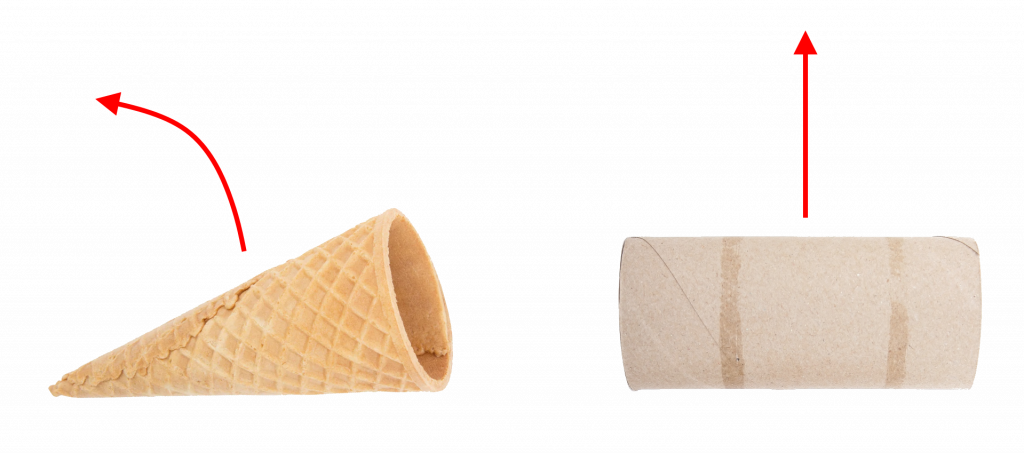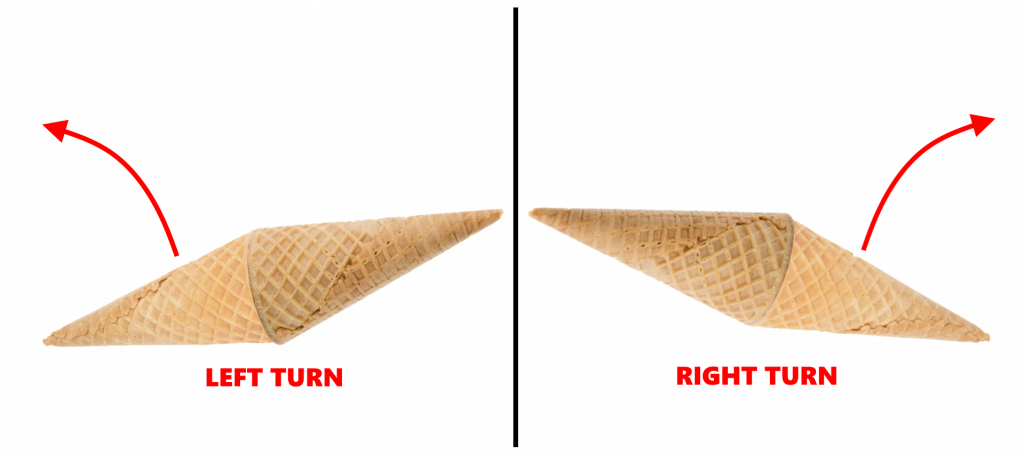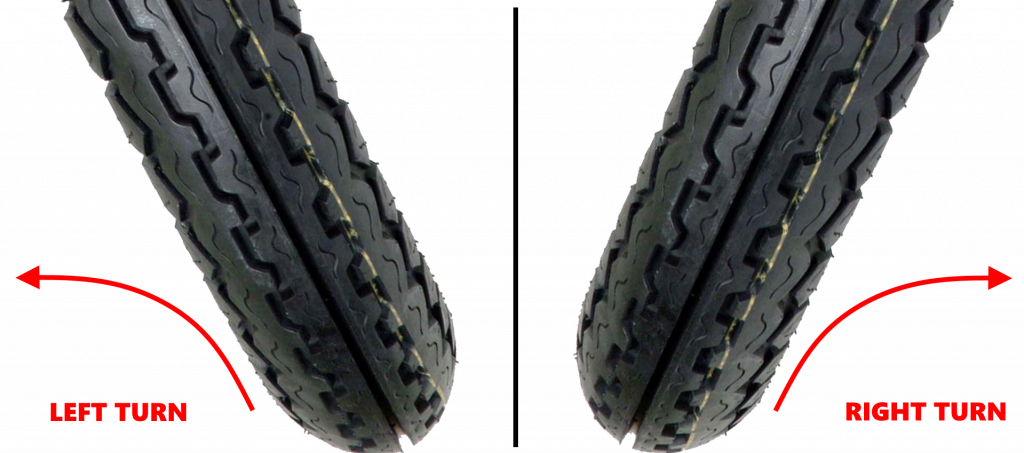Counter Steering
There’s nothing new here in terms of basic dynamics. From the moment your parents removed the training wheels from your first bicycle with those tiny 8″ wheels, you’ve been counter-steering.
At four or five years old, we didn’t have time for physics — we were only focused on sticking a playing card in our spokes to give us our first “engine.” I think we can all remember that moment when our parents finally let go of the seat. That’s when we learned — and built the muscle memory for — steering the bicycle underneath our body weight to keep our balance on two wheels. Exhilarating — and yes, a pivotal moment in our lives.
Later that day, we probably figured out that instead of steering the bicycle underneath our body to keep it going straight, we could steer slightly and momentarily in the opposite direction. This allowed our body and bicycle to lean to one side, resulting in our first turn.
Counter-steering — steering opposite to the direction of the intended turn — is what you used to temporarily shift your body and bicycle weight to the inside of the turn to create the turn. At that moment, you became a counter-steerer. Congratulations!
So why the big fuss? I learned that when I was 5.
Well, this skill is one of the most important to master when entering the sport of motorcycling. It’s also one of our “Four Essential Skills” here at AMS.
We already have the foundation from our early bicycle experience and can likely handle a motorcycle at slower speeds without much trouble. The problem shows up at higher speeds. Motorcycles travel much faster and have tires and wheels that weigh eight to ten times more than bicycle wheels. This creates a significant amount of gyroscopic force and momentum as speed increases.
Add in the geometry of rake and trail, along with a 500+ pound motorcycle that outweighs the rider, and challenges begin to appear. The faster a motorcycle travels, the stronger these forces become in keeping it upright and traveling straight.
Many new riders have fallen victim to these unexpected forces and have ridden straight off the road as a result. Our goal is to prepare you for this by gradually increasing speed and learning how much counter-steering input is required — both in terms of pressure and duration. This helps build that crucial muscle memory you’ll need to perform counter-steering instinctively, especially in emergency situations.
A Real-World Example
The following video comes from YouTube’s FortNine channel — a great source of entertaining and informative content: https://www.youtube.com/@FortNine
It clearly shows a new rider among experienced riders who hadn’t yet developed the muscle memory to counter-steer confidently at higher speeds. We’re not poking fun at this rider — every motorcyclist you see out there had to learn this skill. The rider’s only mistake was not practicing counter-steering at that speed before the ride.
Understanding Motorcycle Wheels and Tires
Let’s talk about motorcycle wheels and tires for a moment. If you roll an empty toilet paper tube across the floor, it’ll roll straight. But if you roll an ice-cream cone, it’ll turn in a circle (Left Picture Below). That’s because of the cone’s shape — one end is smaller than the other. Now, if we connect two ice-cream cones together at their larger ends, our newly formed “cone tire” will steer in one direction when leaned on one cone, and the opposite direction when leaned on the other (Center Picture Below). This is why motorcycle tires are shaped the way they are — to carve turns (Right Picture Below).



As mentioned earlier, a few more geometric concepts come into play, like rake and trail, which have a big impact on steering and the leverage needed to counter-steer. We’ll look at those next.

Rake, Trail, and Their Role in Steering
Along with the shape of the tires, rake and trail also play a major role in how a motorcycle turns.
To picture this, imagine a line drawn down the motorcycle’s front forks, extending all the way to the pavement (purple dot above). The point where the front tire touches the pavement would be the yellow dot. The distance between those two dots is what we call the trail. You can see that the rake angle of the forks and the diameter of the front tire determine how much trail a motorcycle has.
If we stood behind the motorcycle, holding onto the rear passenger grab handles, and leaned the bike to its left side, the handlebars would naturally turn left because of the trail. Likewise, leaning the bike to the right would cause the handlebars to turn right.This is the geometry motorcycle engineers think about when designing bikes. Combined with the gyroscopic forces of the wheels, this is what makes a motorcycle stable and able to stay upright at speed — and naturally lean into turns at slower speeds.
Putting It All Together
To sum it all up, counter-steering (also called push steering) means momentarily pushing on the handlebar grip in the direction you want to turn. That push causes the motorcycle to steer slightly in the opposite direction, which creates the lean. That lean rolls the tire onto its side, and with the help of rake and trail, the motorcycle carves through the turn. We prefer the term counter-steering because the same steering effect can also be achieved by momentarily pulling the opposite handlebar. We like to remind riders that both hands should always be actively involved in controlling the motorcycle. Once the bike is leaned appropriately for the curve and moving at a steady speed, it will naturally continue turning without further counter-steering input — thanks to rake and trail. If the corner tightens mid-turn (a decreasing-radius curve), you’ll need a bit more counter-steering input to maintain your line.
How Much Counter-Steering Is Enough?
This is where many new riders get confused. Counter-steering input is very brief — we’re talking fractions of a second. Remember, counter-steering is only needed to initiate the lean. Once the motorcycle reaches the lean angle you want, you stop the input and let the bike do the rest. Depending on your speed and situation, that could mean just half a second of gentle pressure on the bars. This is the muscle memory every rider must build. Each motorcycle feels a little different and may require slightly different counter-steering input — but the principle is always the same.
Time to Practice
Now that you understand the why behind counter-steering, rake, and trail — it’s time to get out there and practice. Start slow, build confidence, and pay attention to how your bike responds. The more you ride, the more natural counter-steering becomes. Before long, it won’t even be something you think about — it’ll just happen.
Ride safe, and have fun out ther
